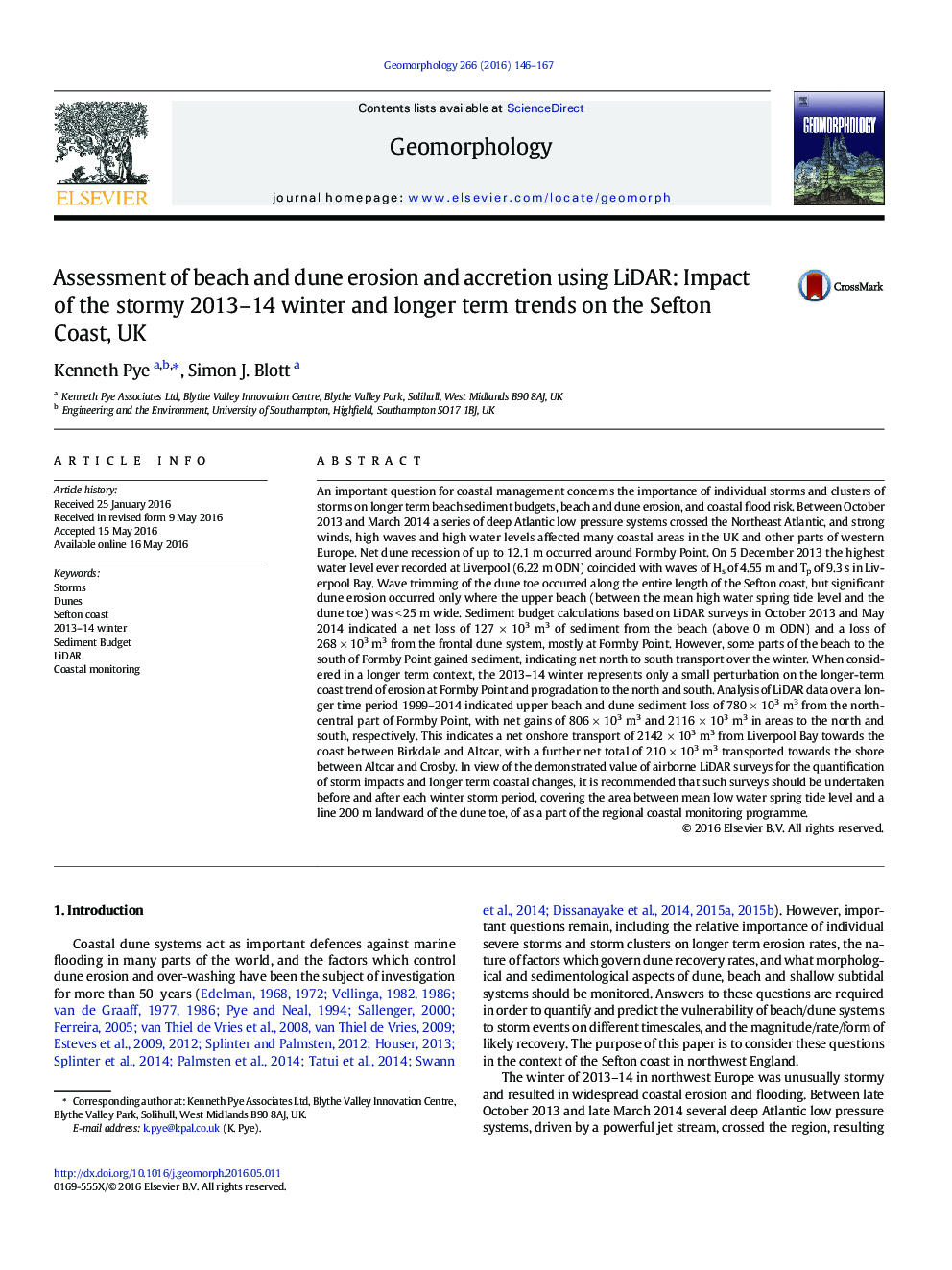| کد مقاله | کد نشریه | سال انتشار | مقاله انگلیسی | نسخه تمام متن |
|---|---|---|---|---|
| 4684024 | 1635383 | 2016 | 22 صفحه PDF | دانلود رایگان |

• the stormy winter of 2013-14 caused up to 12 m of dune erosion on the Sefton coast, NW England
• net sediment losses of 127 × 103 m3 and 268 × 103 m3 occurred from the upper beach and frontal dunes
• these changes represent only a small perturbation on longer-term trends of coastal change
• Formby Point lost 780 × 103 m3 of sediment 1999-2014, with gains of 2922 × 103 m3 to the N and S
• LIDAR provides a powerful monitoring tool and should be undertaken before and after each winter
An important question for coastal management concerns the importance of individual storms and clusters of storms on longer term beach sediment budgets, beach and dune erosion, and coastal flood risk. Between October 2013 and March 2014 a series of deep Atlantic low pressure systems crossed the Northeast Atlantic, and strong winds, high waves and high water levels affected many coastal areas in the UK and other parts of western Europe. Net dune recession of up to 12.1 m occurred around Formby Point. On 5 December 2013 the highest water level ever recorded at Liverpool (6.22 m ODN) coincided with waves of Hs of 4.55 m and Tp of 9.3 s in Liverpool Bay. Wave trimming of the dune toe occurred along the entire length of the Sefton coast, but significant dune erosion occurred only where the upper beach (between the mean high water spring tide level and the dune toe) was < 25 m wide. Sediment budget calculations based on LiDAR surveys in October 2013 and May 2014 indicated a net loss of 127 × 103 m3 of sediment from the beach (above 0 m ODN) and a loss of 268 × 103 m3 from the frontal dune system, mostly at Formby Point. However, some parts of the beach to the south of Formby Point gained sediment, indicating net north to south transport over the winter. When considered in a longer term context, the 2013–14 winter represents only a small perturbation on the longer-term coast trend of erosion at Formby Point and progradation to the north and south. Analysis of LiDAR data over a longer time period 1999–2014 indicated upper beach and dune sediment loss of 780 × 103 m3 from the north-central part of Formby Point, with net gains of 806 × 103 m3 and 2116 × 103 m3 in areas to the north and south, respectively. This indicates a net onshore transport of 2142 × 103 m3 from Liverpool Bay towards the coast between Birkdale and Altcar, with a further net total of 210 × 103 m3 transported towards the shore between Altcar and Crosby. In view of the demonstrated value of airborne LiDAR surveys for the quantification of storm impacts and longer term coastal changes, it is recommended that such surveys should be undertaken before and after each winter storm period, covering the area between mean low water spring tide level and a line 200 m landward of the dune toe, of as a part of the regional coastal monitoring programme.
Journal: Geomorphology - Volume 266, 1 August 2016, Pages 146–167